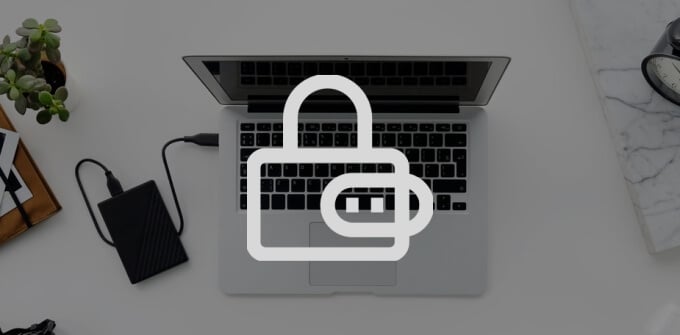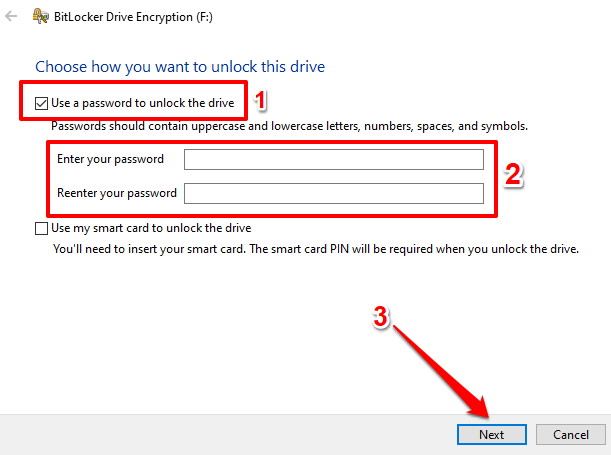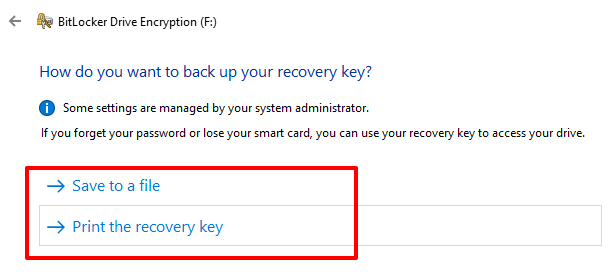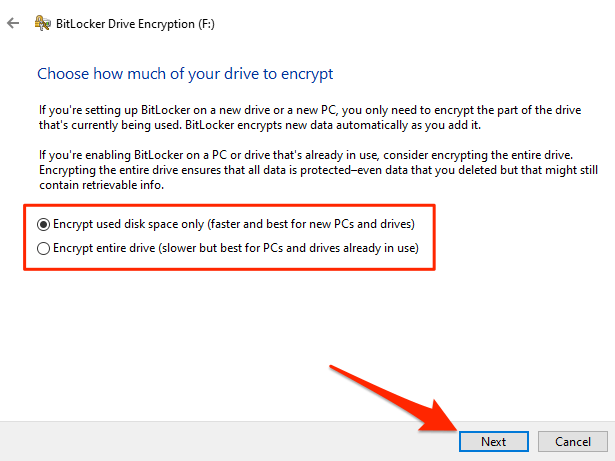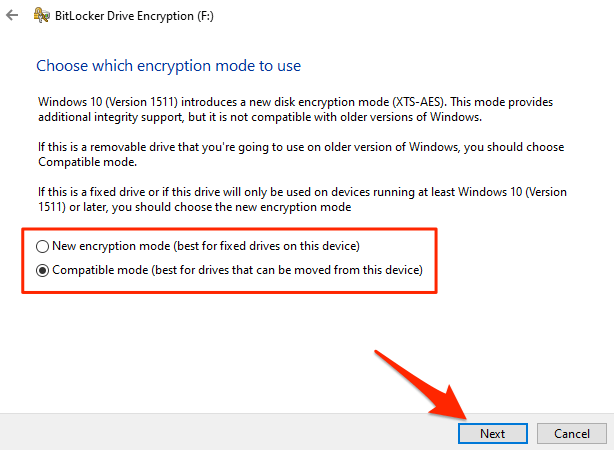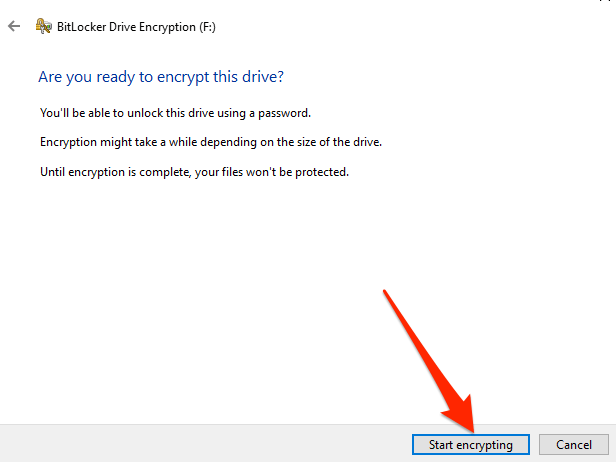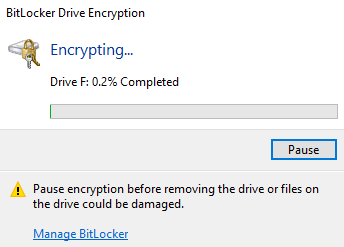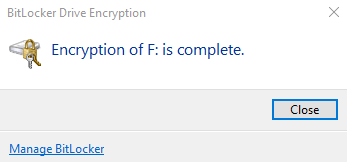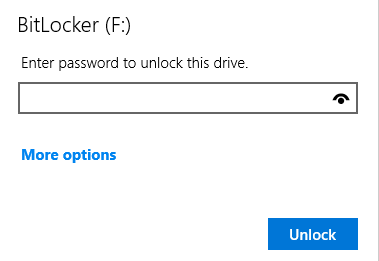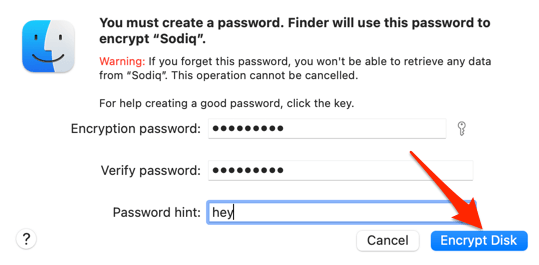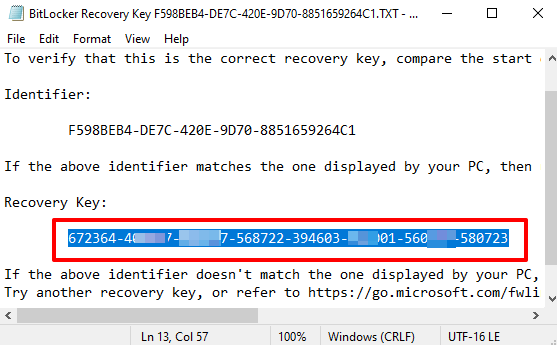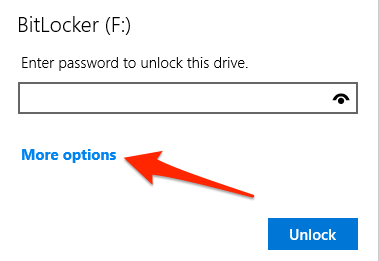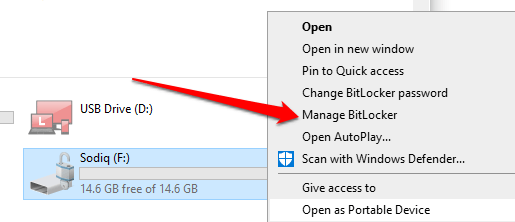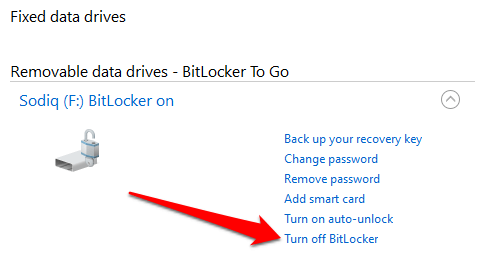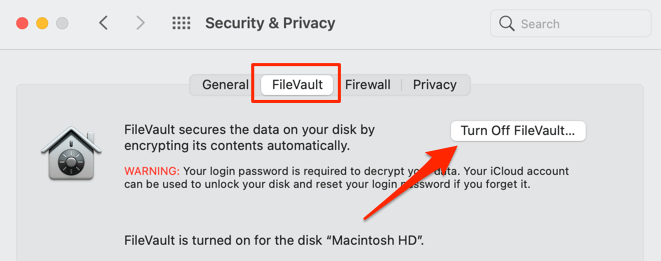All you need to protect your hard drive is your personal computer or laptop. Windows and Mac have built-in encryption tools that let you set a password on your storage devices. Proceed to the sections below to learn how to set a password on an external hard drive on your computer.
Encrypt an External Drive on Windows 10
Encrypting an external storage device on a Windows 10 computer requires you to manually choose an encryption method, encryption mode, backup a recovery key, and create a perfect (read: secure) password. It may seem like a lot of work, but it’s very easy. We’ll walk you through the entire process from start to finish. First, you need to enable BitLocker—Windows built-in encryption tool—on your computer. Plug the hard drive into your PC and follow the steps below. Note: You can’t encrypt a drive on PCs running Windows 10 Home edition because the operating system doesn’t support BitLocker. Upgrade to Windows 10 Pro, Enterprise, or Education to use BitLocker.
1. Enable BitLocker
Launch the File Explorer, right-click the external drive, and select Turn on BitLocker. Do not unplug or remove the drive from your PC while Windows starts the BitLocker encryption window.
2. Create a Password
Check the box that reads “Use a password to unlock the drive” and enter your preferred password. Re-enter the password in the provided dialog box and select Next to proceed. Your password must fulfill the criteria listed below, or else you’ll get an error message:
Should contain at least 8 characters.Must have at least one uppercase letter.Must have at least one lowercase letter.Must have at least one number, symbol, or space.
3. Save Your Recovery Key
Windows will automatically generate a recovery key for the external drive. The recovery key is a spare key that unlocks your encrypted drive if you ever forget the password. The “Print the recovery key” option will launch a new window where you’ll be able to print the recovery key on paper. If you choose the “Save to a file” option, Windows will encode the recovery key in a text file. Save the file in your preferred folder/location on your PC and select Save. When you get a success message that “Your recovery key has been saved” or “Your recovery key was printed,” select Next to proceed.
4. Choose Encryption Method
BitLocker has two encryption methods: Used Disk Space Encryption and Full Disk Encryption. Select “Encrypt used disk space only” if your external drive is new and has never been used on another computer. BitLocker will encrypt a sector on the drive such that new data copied to the drive in the future is automatically encrypted. However, if you encrypt a previously-used drive (even if it’s empty) using this method, someone could gain access to deleted or moved data. That’s because the BitLocker encryption engine doesn’t recognize sectors containing deleted data as used disk space. Hence, it wouldn’t encrypt such sectors. If you want to set a password on an external drive that’s already in use, select Encrypt entire drive. That’ll prompt BitLocker to encrypt all the sectors and data on the drive—even files that you deleted. Note that Used Disk Space encryption is generally faster; it takes a couple of seconds or minutes, depending on how much data is on the drive. Full Disk Encryption, on the other hand, could run for hours before completion.
5. Choose Encryption Mode
Select New encryption mode if you’ll be using the external drive only on your computer, or on devices running Windows 10 (version 1511 or later). If you’re unsure, or you think you may need to access the drive on devices running older Windows versions, select Compatible mode and proceed.
6. Start Encrypting
BitLocker will start the encryption of the drive when you select the Start encrypting button. As mentioned earlier, the operation could run into minutes or hours, depending on the size of the drive and data it holds. Do not remove the drive from your PC without pausing the encryption. Doing so could damage the drive. If you need to urgently use the drive during the encryption process, select Pause and unplug the drive. Note that your files and the drive aren’t protected until the encryption is complete. Wait until you get an “Encryption complete” success message like the one below. When you eject the encrypted drive on your PC or try to access it on another PC, a BitLocker window prompting you to enter the drive’s password will appear on the screen.
Encrypt an External Drive on macOS
Setting a password on an external drive on macOS is the easiest thing you may ever have to do. Plug the drive into your Mac and follow these steps:
- Right-click the drive (check the Locations section) and select Encrypt or Encrypt
. Note: If the external drive isn’t showing up on your Mac, or the Encrypt option is missing, you may need to format the drive to a file system that macOS supports. Refer to this external hard drive troubleshooting guide to learn more. - Enter a password, re-enter the password, and type in a password hint. Pro Tip: Click the key icon next to the Encryption password dialog box to launch the Encryption Password Assistant. The tool will suggest random passwords or help you create a strong custom password.
- Select Encrypt Disk. The macOS encryption engine will start encryption on the drive. This operation may take a couple of seconds or minutes, depending on the drive’s content and size. When the encryption is complete, eject and reinsert the encrypted drive, or plug it into another Mac. A password entry window will pop up on the screen; enter the password and select Unlock to gain access.
What Happens When You Forget The Encryption Password
Strong passwords are pretty secure but often easy to forget. If you can’t remember the password to your encrypted drive, you can still very much access the content. We’ll show you how to go about it on Windows and macOS.
On Windows: Use the Recovery Key
Remember the recovery key that you printed or saved to your PC while encrypting the drive? That’s all you need to access the drive if you forget the encryption password. Head to the location where you saved the recovery file, double-click the text file to access its content, and copy the numbers in the Recovery Key section. Plug the drive into your PC and wait for the BitLocker password entry window to appear on the screen. Select More options and select Enter recovery key. Finally, paste the recovery key in the dialog box and select Unlock. If you printed the recovery key, retrieve the printout, type the recovery key, and select Unlock. You should now be able to access the drive in File Explorer. If you still can’t remember the password, you’ll have to create a new one. Right-click the drive and select Manage BitLocker. [19-manage-bitlocker-windows-10.png] Locate the external drive in the “Removable data drives” section and select Turn off BitLocker. Afterward, encrypt the drive from scratch and use a new password.
On Mac: Disable FileVault
Unlike Windows, you can’t access an encrypted drive on macOS with a recovery key. The only workaround is to turn off FileVault—the macOS encryption engine. Head to System Preferences > Security & Privacy > FileVault and select Turn Off FileVault. That temporarily disables any encryption on all internal and external drives. Launch Finder and you’ll have access to the drive without entering a password. But you won’t be able to decrypt or create a new encryption password without the old password. Re-enabling FileVault will automatically re-encrypt the drive with the forgotten password.
Third-Party Software and Hardware Alternatives
If you’re having difficulties using these built-in tools, resort to reliable third-party solutions like VeraCrypt. Alternatively, you could buy hardware-encrypted storage devices or external drives with fingerprint readers. These drives offer an equally secure form of password-free biometric encryption that’s way easier to use and set up.
